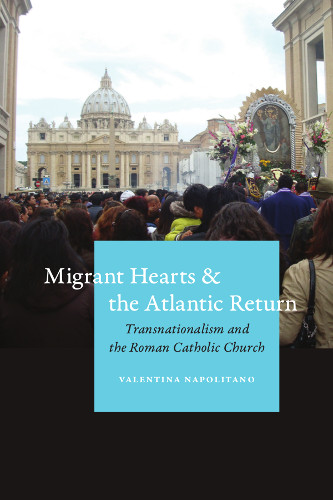
The report Religion, Media, and the Digital Turn, published by the Religion and the Public Sphere Program of the Social Science Research Council, provides an in-depth examination of the way the digitalization of religious scholarship changes the message and the audience of such research. While not exactly a new development (the authors note that digital religious scholarship can be traced back to the late 1940s when Jesuit Roberto Busa convinced IBM to give him access to the company’s punch card technology to create a concordance of all of St. Thomas Aquinas’s writings), religion has more recently lagged behind other fields in the humanities in digitalization. That disparity is changing as a loose network of academics, journalists, and other professionals have emerged that seek to harness technology to study religion and the role that technology plays in religious faith and practice. The report shows how the digitalization of religious scholarship has tended to blur the lines between popular (and journalistic) and scholarly interest and participation.
Just as religion scholars have taken to blogs, showcasing their research and analysis to peers and wider readerships, it is not uncommon for unschooled laypeople to participate in scholarly deliberations (as seen in the case of an IT professional in suburban Detroit becoming a key figure in the debate over the authenticity of a controversial sixth-century text known as the Gospel of Jesus’s Wife). The report also looks at the new ways scholars are studying religion online, such as through Facebook and Twitter analysis, as well as how e-journals, e-books, podcasts, and more ambiguous endeavors often just called “projects,” are challenging older print mediums and their protocols of peer review and approval. The report concludes with a very useful listing of digital projects and publications in the study of religion. The report can be downloaded at: http://www.ssrc.org/publications/view/religion-media-and-the-digital-turn/
“Technologies of religious life” is the theme of the current issue of Crosscurrents (March), a journal of the Association of Religion and Intellectual Life. The articles cover a wide range of religions and how they interact with technology, from Sufi transmission of songs through to how African religious traditions change when they are propagated online. In the case of the latter, having a website and Facebook page serves to legitimize African religious practitioners as “authentically African” to their followers, while overriding traditional authorities and creating a transnational following. Especially noteworthy is Miranda Klaver’s article on how the global Hillsong megachurch network creates “sermonic events,” where real-time video casting of sermons have become an acceptable substitute for live preaching, which creates unity throughout the network and also assists in church planting efforts. For more information on this issue, visit: http://onlinelibrary.wiley.com/doi/10.1111/cros.2015.65.issue-4/issuetoc
The current issue of Bulletin for the Study of Religion (March) is devoted to the work and findings of the Religion and Diversity Project, a seven-year study of religious pluralism and its social effects in Canadian society and abroad. The findings of the $2.5-million project, funded by the Social Sciences and Humanities Research Council and based at the University of Ottawa, have been disseminated in several books and in scholarly and popular publications. Especially noteworthy is an article summing up the preliminary findings on religious identity in Canada, which derive from a unique survey method that blended qualitative and quantitative approaches and focuses less on institutional practices and beliefs. Among the findings is that while the standard ways of being religious are still dominant in Canada, there is a not insignificant population of people practicing their religions in eclectic and marginal ways, as well as a larger number of non-religious than previous research has tended to show. An interview with project director Lori Beaman confirms the latter point, as she notes that her team had not initially considered the growth of the non-religious and “nones” in their research plans and had to adjust accordingly. Another article provides practical guidance on disseminating scholarly research to a popular audience. For more information on this issue, visit: http://bulletin.equinoxpub.com/
Valentina Napolitano´s new book Transnationalism and the Roman Catholic Churches. Migrant Hearts and the Atlantic Return (Fordham University Press, $28.00) is a sophisticated attempt to understand the different and somewhat contradictory roles the Catholic Church has played—and continues to play—in ministering to migrant Latin American minorities in Rome. Blending extensive ethnographic fieldwork and historical interpretations, Napolitano´s work shows many of the perplexities in the Catholic understanding of contemporary human mobility, cultural difference, and multicultural sharing and faith. The book takes on the affective and subjective experiences of Catholic migrants attempting to live their faith in contexts other than those of their native cultural milieu and their struggle in adapting to strange—and many times hostile—institutional customs and settings. For Napolitano, tensions between adaptation to the Roman mode of Catholic practices and the need many migrants have to sustain their own local practices are at the core of the Church’s ability to retain the faithful. These tensions emerge also in processes of the infantilization of migrants by priests. Moreover, the complex relationship is especially difficult in Rome, where church authority and obedience are so important given the fact that the pope is the city´s bishop.
The book aims at illuminating the multiple exchanges and circulation of ideas, materialities, texts, and fantasies linking America, Europe, and the Mediterranean in what Napolitano calls an “Atlantic frame of analysis,” even though her ethnographic accounts tend to stress the importance migrants give to (their) local practices and the absence of institutional foundations to support them in the Roman context. The book demonstrates the conflict the church faces while dealing with migration: its theological approach grounds migrants in a human rights discourse, granting them respect for their cultural differences and universalizing their Catholicism. Migrants, however, pose a challenge to the prevalent understanding of Catholic affects and practices in the European framework, since they tend to locate their subjectivity outside of the stiff margins provided by many of the Roman lay and religious organizations linked to the church itself. Reviewed by Marisol Lopez-Menendez, a sociologist at the Universidad Iberoamericana in Mexico City and author of the forthcoming book, Miguel Pro: Martyrdom and Politics in 20th Century Mexico (Rowman & Littlefield).